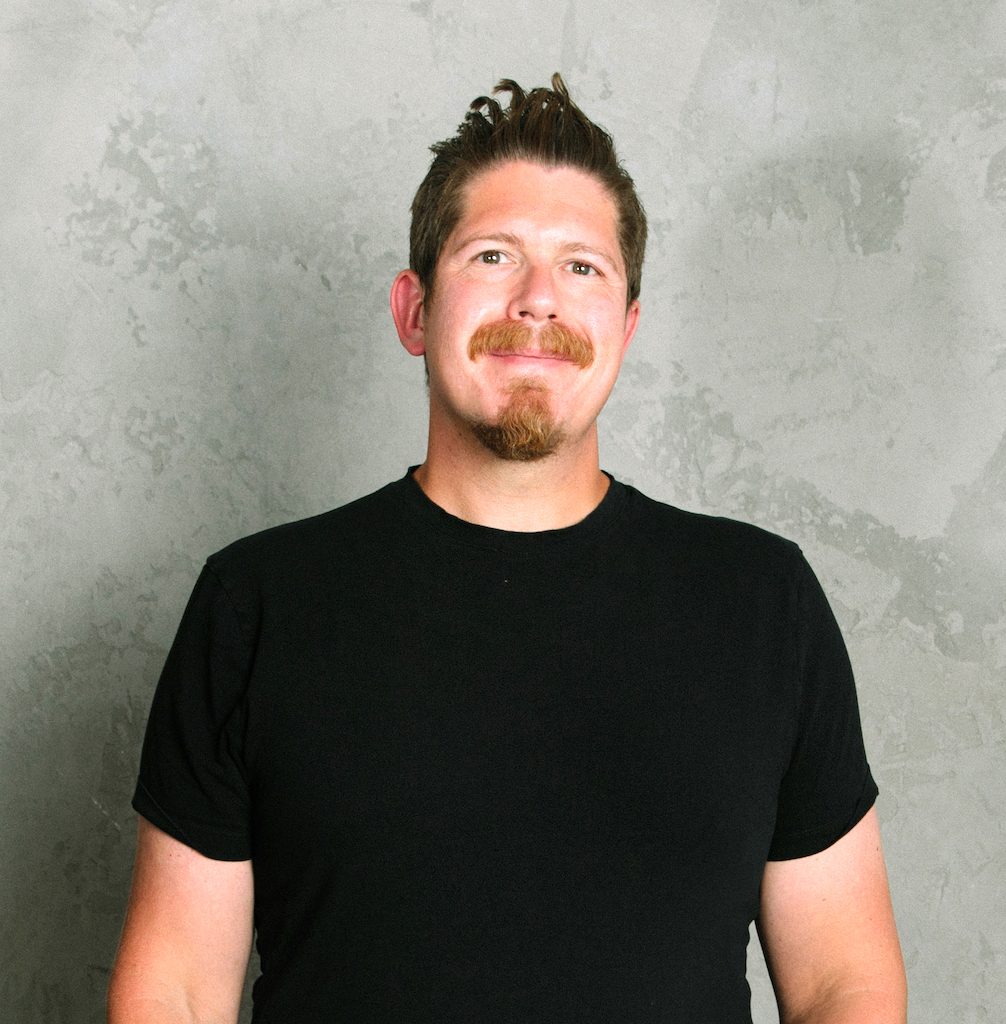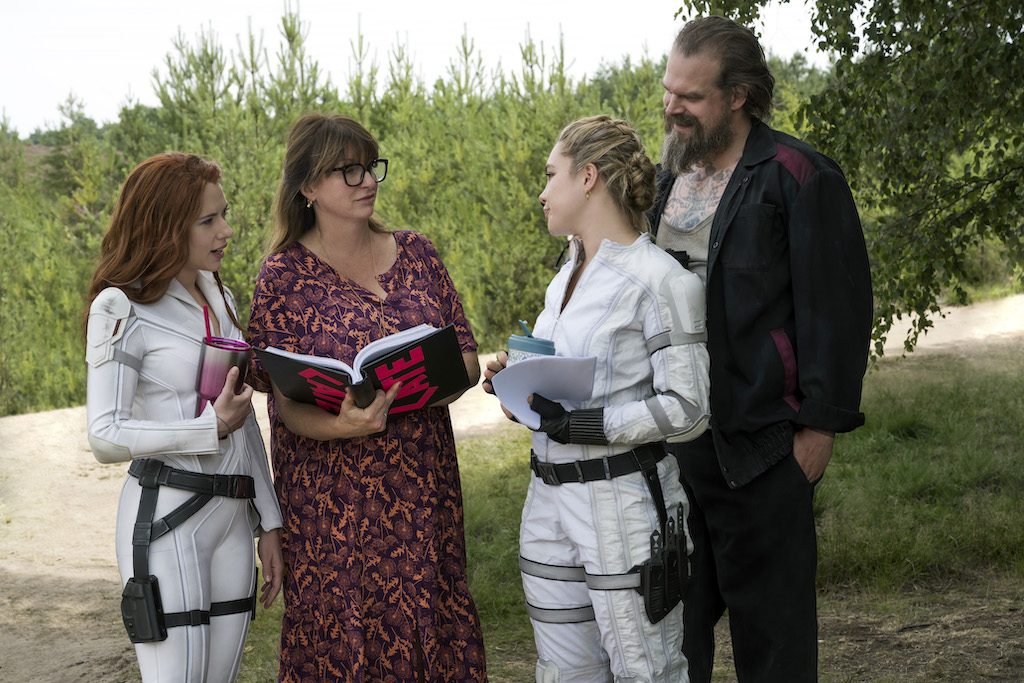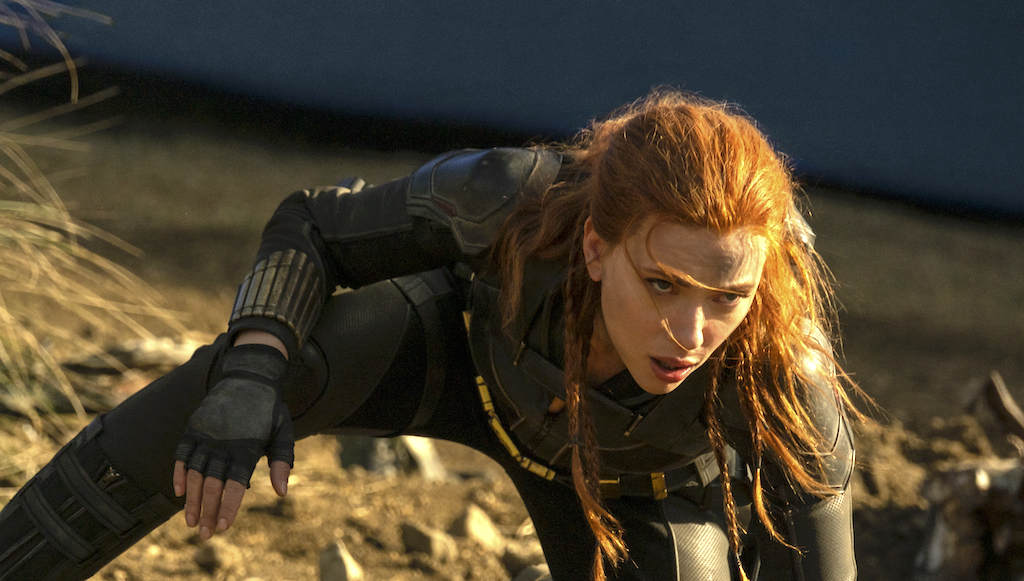Contains mild spoilers
Marvel Comic Universe (MCU) fans were given a long-awaited treat with the release of spy-thriller Black Widow, Natasha Romanoff’s adventures post Avengers: Civil War and pre Infinity War. Eric Pearson, the screenwriter behind the film spoke with Creative Screenwriting Magazine about his journey to get this story to the screen. Eric is also known for his writing work on Thor: Ragnarok and Godzilla vs Kong.
Pearson is no stranger to the MCU. He is a credited writer on the Agent Carter TV series with Christopher Markus and Stephen McFeely (check out their interview) and the Marvel One-Shot shorts. Pearson modestly understated his working relationship with them. “Given what everyone was up against with the scale of the Avengers movies, they needed someone who could pick up the slack.” Eric could work on Infinity War while Markus and McFeely worked on Civil War and vice-versa.
He first appeared on camera in a TV documentary titled Marvel Studios: Assembling A Universe. “I was a nervous wreck on camera,” claimed Pearson. But the documentary did expand on building out a web of characters.

Eric Pearson. Photo by Diana Mantis
Marvel Writers Program
Eric Pearson first dabbled in the MCU during his time in the Marvel Writers Program. “It was my first professional writing gig and I was learning on the fly.” Pearson thrived creatively during this program because he felt Marvel rewarded him for taking initiative and having “creative excitement.” He even read some Black Widow comics during the program and conceived the kernels of a potential Black Widow meets Hawkeye film.
I don’t think I realized I was learning and I don’t think they realized they were teaching during the Marvel Writers Program
The idea for the Marvel One-Shot shorts was also born during the Marvel Writers Program inspired by the shorts Pixar created to support its movies. This was an opportunity for Pearson to fully immerse himself in the MCU while adding his personal stamp to it. “The MCU was about to be blown open with Avengers,” he said. This impetus trained his creative mind to explore new worlds within the MCU world. “It allowed us to tell a new story in Black Widow that can only be told in this universe.”
A memorable lesson Pearson learned during the program that he still uses today is “once you reach the third act, sprint to the finish.” Don’t let the story veer to the side or stall. The finale must be spectacular, especially in these big, bombastic movies. Moreover, the writer doesn’t believe the audience will wait for the potential big explosion at the end if you take your time getting there.
Plussing
“Plussing” is a term that Pearson was introduced to in the Marvel Writers Program. It refers to making minor adjustments to a scene to elevate it to its full potential. Don’t waste any pages.
The magnitude of the Marvel Movies is so huge, that every scene has to do double duty – deliver plot and emotional punch in minimal time.
Writing Black Widow was an organic career progression for Pearson. He had a rich foundation to write his script. Marvel gave him extensive notes on the overall direction of the movie, character, and theme.
David Hayter was originally signed to write the screenplay, with contributions by Jan Schaeffer and Ned Benson (both have story by credits). When Aussie director Cate Shortland and Scarlett Johansson (Natasha Romanoff) came on board, they settled on the concept of Black Widow being a drama about Romanoff’s “manufactured extended family.” This template was partially inspired by the TV series, The Americans about a Russian undercover spy family. This element allowed an unexpected entrée into Nastasha’s past by getting the family back together in the present day to resolve their conflicts.

Black Widow/Natasha Romanoff (Scarlett Johansson), Director Cate Shortland, Yelena (Florence Pugh) and Alexei (David Harbour) Photo by Jay Maidment/ ©Marvel Studios
Yelena Belova (Florence Pugh), Natasha’s sister was an organic invention to the story. Red Guardian/ Alexei Shostakov (David Harbour) was a character Pearson explored further. “The trickiest part was writing a villain plot in which the villain could potentially succeed.” The villains, General Dreykov (Ray Winston) and his daughter, the Antonia Dreykov/ Taskmaster (Olga Kurylenko) had to fit into the logical context of the future Avengers stories given that the audience is familiar how that panned out.
Creating Yelena’s character was necessary to mine the dynamics of sisterhood and create an emotionally satisfying story. She was essentially a blank canvas while Natasha was an established entity. Eric had to consider how she appeared in Civil War and Infinity War compared to Black Widow. “She was more emotional, vulnerable and at peace in the final two Avengers movies. I had to find out what changed her in Black Widow.” There was a clear delineation of the key stages of Romanoff’s life. “It started with a traumatic childhood leading her to defect from the Red Room to the Shield. Natasha got to reinvent herself. Black Widow was a chance for her to present herself the way she wanted to. Everyone got to know her on her own terms.”
Every villain tried to break down her barriers to her past. “Who better to do this than family?” Once her Russian family broke down her barriers, Natasha could forgive herself and heal before returning to her adopted family – the Avengers.
When Pearson was ready to write the screenplay he had to wrangle the wealth of ideas and ensure everyone was on the same page. He started with a detailed treatment before embarking on a first draft. His primary goal was to service Romanoff’s story, so it was primarily approached as a standalone film. Whenever he saw an opportunity to reference the greater Avengers or Marvel universes at large, he took them to build audience interest. Sometimes, these references were mandated by the studio.
Black Widow is both one twenty-fourth of a bigger story and its own story.
Black Widow exists as a self-contained story, but Pearson hopes that it will encourage audiences to view the other movies to appreciate a greater sense of the world and the characters that inhabit it.
Writing Black Widow as a family drama led Pearson to take special care with the pivotal family dinner scene. It is the convergence of many characters we haven’t seen in a while. It has comedy and character conflict as well as exposition. Cate Shortland (director) ordered a table read for this scene a few days prior to shooting it because it was so pivotal. “It was like being at a family Thanksgiving table.”
The third act also posed its own challenges for Pearson. There was so much going on geographically around different parts of the facility and it was tough keeping track of all the characters and the information delivery system, “who everyone was and who knew what at that moment.”
Aside from wrangling exposition, Eric Pearson took great care to balance the shifting tones in Black Widow. Some scenes were very dark and some were downright funny. “We had moments of sadness that turned to comedic moments to put the audience off-kilter with moments they might not expect.“
